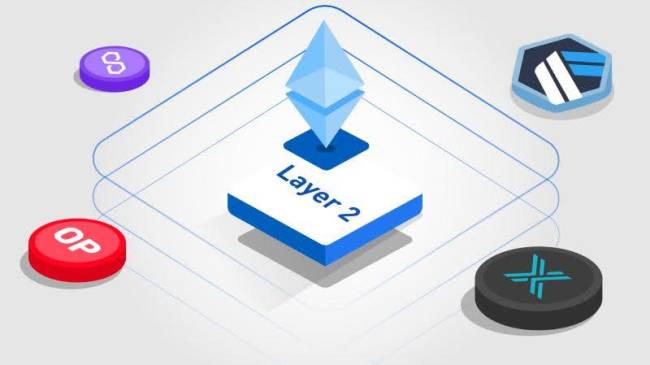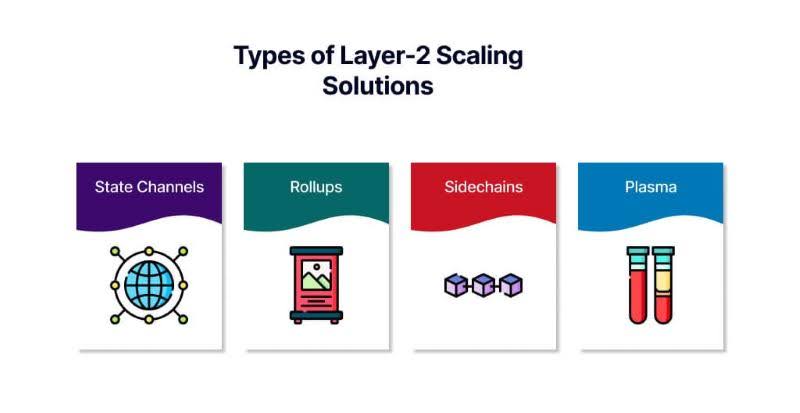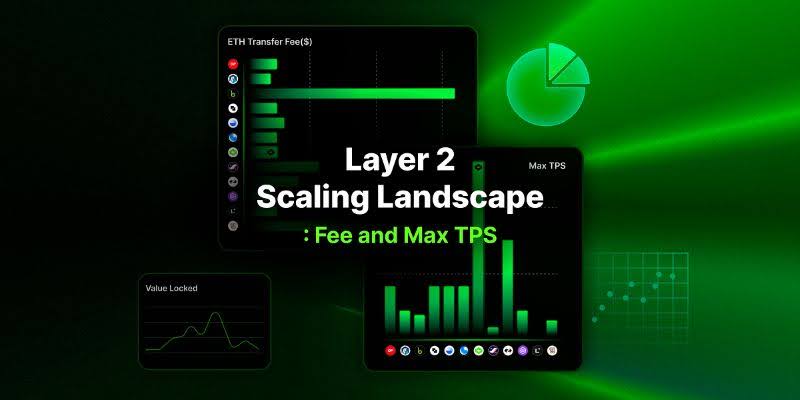Blockchain networks like Ethereum are facing significant scalability challenges, which hinder their ability to process a high volume of transactions efficiently. As the number of users and applications grows, the network often becomes congested, leading to slower transaction times and higher fees. Layer 2 scaling technologies offer a promising solution to these issues by enabling transactions to be processed off the main blockchain, thus reducing congestion and improving overall performance. U2U Network is at the forefront of this innovation, actively exploring and implementing Layer 2 solutions to enhance blockchain scalability and efficiency.
Table of Contents
What are Layer 2 Scaling Technologies?
Layer 2 (L2) scaling technologies are advanced solutions aimed at alleviating the scalability limitations faced by Layer 1 (L1) blockchains such as Ethereum. In essence, L2 acts as an additional layer built atop L1, analogous to adding extra floors to a building without altering its foundational structure.
L1 blockchains, while fundamental, often encounter challenges like slow transaction speeds and high fees during peak usage periods due to their inherent design constraints. L2 solutions function as supplementary frameworks that process a significant portion of transactions and computations off-chain. They interact with the L1 blockchain periodically to finalize outcomes or resolve disputes. This method substantially boosts transaction throughput, reduces fees, and accelerates confirmation times, all while maintaining the security and decentralization features of the underlying L1 blockchain.

Purpose of Layer 2 Scaling
The primary objective of Layer 2 scaling is to tackle the "scalability trilemma" by concurrently achieving decentralization, security, and scalability. By offloading transaction processing and computations from L1 to L2, these technologies achieve the following:
- Increased Transaction Throughput: L2 solutions can handle thousands of transactions per second (TPS), surpassing the capacity limits of most L1 blockchains. This scalability enhancement enables blockchain networks to support higher transaction volumes and accommodate diverse applications.
- Fee Reduction: Because L2 transactions are processed off-chain, they incur significantly lower fees compared to on-chain transactions on L1. This cost efficiency makes blockchain applications more accessible and economically viable for users.
- Improved Network Performance: By alleviating the computational burden on L1, Layer 2 solutions enhance overall network performance. This translates to faster transaction confirmations and a smoother user experience across blockchain platforms.
Preserving Security and Decentralization
Despite their scalability benefits, Layer 2 solutions do not compromise the security or decentralization of the underlying L1 blockchain. They are specifically engineered to inherit the robust security protocols of L1, ensuring that transactions are ultimately validated and settled on the main chain. This architectural approach guarantees that users' assets and data remain safeguarded by the same rigorous security measures that characterize the foundational L1 blockchain.
Types of Layer 2 Scaling Technologies
Layer 2 scaling technologies encompass a range of innovative solutions tailored to enhance blockchain scalability while balancing security and efficiency. Here are the main types:
Rollups (Optimistic and ZK): Rollups consolidate numerous transactions into a single transaction on the main blockchain, significantly reducing data congestion and improving transaction speed and cost-effectiveness.
- Optimistic Rollups: Assume transaction validity by default, allowing for high scalability. Disputes are resolved with fraud proofs, although withdrawals may have longer processing times.
- ZK-Rollups (Zero-Knowledge Rollups): Utilize advanced cryptographic proofs (ZK-SNARKs or ZK-STARKs) to validate bundled transactions, offering robust security guarantees albeit with increased complexity and computational requirements.
State Channels: State channels enable multiple transactions to occur off-chain, with only the final outcome recorded on the main blockchain. This method is ideal for applications needing frequent, small transactions, such as microtransactions or real-time gaming interactions. State channels excel in providing high throughput and near-instant transaction finality.

Plasma: Plasma establishes independent child chains connected to the main blockchain, allowing them to process transactions autonomously. This setup enhances scalability, but these chains rely on the main blockchain for security and data availability, which can pose limitations.
Sidechains: Sidechains operate as separate blockchains running parallel to the main chain, linked through a two-way bridge. They feature their own consensus mechanisms and can be tailored for specific applications, making them versatile for experimental use and innovation. However, sidechains typically offer weaker security assurances compared to the main blockchain due to their independent validator systems.
The Impact of Layer 2 Scaling Technologies on Blockchain
Layer 2 scaling solutions represent a monumental advancement in blockchain technology, surpassing incremental improvements to address fundamental limitations that have hindered widespread adoption.
Scalability Unleashed:
Layer 1 blockchains like Ethereum have historically struggled with throughput limitations, processing a modest number of transactions per second (TPS). In stark contrast, Layer 2 solutions such as optimistic rollups have demonstrated the capability to handle thousands, even tens of thousands, of TPS. This exponential increase in transaction throughput transforms blockchain from a niche technology into a robust infrastructure capable of supporting high-volume applications like gaming, decentralized finance (DeFi), and global payments.
Fee Reduction Revolution:
High transaction fees have been a significant deterrent for blockchain adoption, particularly during periods of network congestion. Layer 2 solutions revolutionize cost structures by aggregating transactions and executing them off-chain. For instance, optimistic rollups can slash fees by factors ranging from 10 to 100 compared to Layer 1 transactions. This dramatic reduction makes blockchain applications more accessible and affordable for a broader audience.

Near-Instantaneous Transactions:
Historically, slow transaction confirmations have been a persistent frustration for blockchain users. Layer 2 solutions, notably state channels, offer near-instantaneous transaction finality comparable to traditional payment systems. This advancement unlocks new possibilities for real-time applications such as online gaming, micropayments, and high-frequency trading, where speed is crucial.
Innovation and Experimentation Sandbox:
Layer 2 solutions serve as an innovation sandbox for developers, enabling experimentation with new protocols, features, and smart contract designs without jeopardizing the security or stability of the underlying Layer 1 blockchain. This environment fosters rapid iteration and refinement of ideas, accelerating the evolution of the entire blockchain ecosystem.
U2U Network's Layer 2 Strategy
U2U Network is forging a distinctive path in blockchain scalability with its innovative modular blockchain architecture and U2U Subnet strategy.
Modular Blockchain Architecture and U2U Subnet
U2U Network distinguishes itself by embracing modular blockchain architecture, featuring a network of interconnected subnets alongside its main U2U Chain (Layer 1). Each subnet operates as an independent blockchain, interconnected with others and the main chain. This design empowers U2U Network to tailor specialized chains for diverse applications such as gaming and DeFi. By distributing tasks across multiple subnets, U2U Network aims to achieve unmatched scalability while upholding robust security and decentralization.

Benefits for U2U Users and Partners
U2U Network's modular approach and U2U Subnet introduce several pivotal advantages:
- Scalability: Horizontal scaling capability enables the addition of more subnets as the network expands, boosting transaction throughput and alleviating congestion on the main chain.
- Flexibility: Customizable subnets cater to specific application requirements, granting developers enhanced control over their blockchain environments.
- Reduced Fees: Offloading transaction processing to subnets significantly lowers fees on the main chain, enhancing transaction affordability for users.
- Faster Transactions: Parallel transaction processing across subnets translates to quicker confirmation times and smoother user interactions.
- Interoperability: Designed for seamless interaction, U2U subnets facilitate fluid communication and asset transfers between different chains within the U2U ecosystem.
- Innovation: The modular architecture fosters rapid innovation by providing a sandbox environment for developers to experiment with new applications and concepts without disrupting the stability of the main chain.
U2U Network's Commitment to Scaling
U2U Network's dedication to scalability extends beyond conventional Layer 2 solutions. By pioneering its modular blockchain architecture, U2U is leading the charge towards a more scalable, adaptable, and resilient blockchain ecosystem. This forward-looking approach holds the promise of unlocking blockchain's full potential across various industries, driving widespread adoption, and fostering a dynamic ecosystem of decentralized applications.
Some prominent Layer 2 projects
The Layer 2 landscape is evolving rapidly, with various solutions making significant strides in enhancing blockchain scalability. Here are some notable players:
- Arbitrum: Arbitrum stands out as a leading optimistic rollup solution, renowned for its seamless integration with the Ethereum Virtual Machine (EVM). It prioritizes developer-friendliness and has garnered a robust ecosystem of decentralized applications (dApps).
- Optimism: Another prominent player in optimistic rollups, Optimism distinguishes itself through its emphasis on community governance and ownership. It innovates with initiatives like "retroactive public goods funding," rewarding projects that contribute positively to the ecosystem.
- Polygon: Formerly known as Matic Network, Polygon offers a versatile scaling platform encompassing sidechains, Plasma chains, and ZK rollups. Its focus on interoperability and scalability has made it a favored choice among developers and users seeking efficient blockchain solutions.
U2U Network leads the charge in maximizing blockchain's potential with its pioneering Layer 2 scaling approach. Through innovative modular blockchain architecture and the introduction of U2U Subnet, the network not only tackles long standing scalability issues in blockchain but also fosters a more adaptable, efficient, and user-friendly environment for decentralized applications. Horizontal scalability, tailored subnet customization, and reduced transaction costs are among the key benefits offered by U2U Network's Layer 2 strategy.
As U2U continues to advance and refine its technologies, it stands poised to significantly influence the future of blockchain, where scalability, speed, and accessibility set new standards rather than pose constraints. This commitment underscores U2U's vision for a decentralized and inclusive future, pushing the boundaries of blockchain technology towards greater innovation and inclusivity.





.png)
